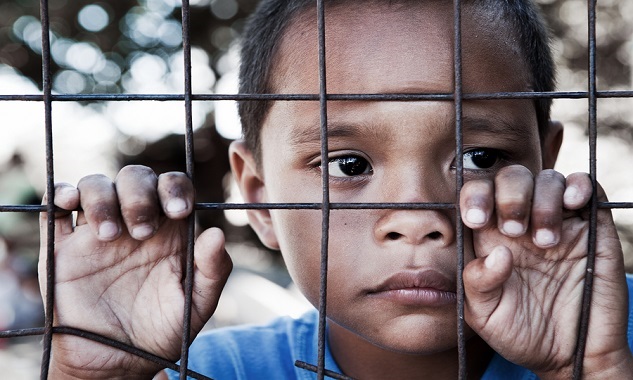Do happy or sad faces raise more money?
Share

To encourage giving, many charities that serve people in need use photos depicting either happy people or sad ones in their pitches. These pictures symbolize the people who will benefit from donations made in response to those appeals.
Lei Jia, a doctoral student in marketing, and I, a professor who studies how and why messages communicated through various media may influence the audience’s attitudes and behavior, wanted to discover which works best.
Happy vs. sad faces
Plenty of research backs the rationales for both approaches.

She’s happy.
Flickr/Jerald Jackson, CC BY-SA
Seeing a smile can make people feel happy. And when they feel happy, they’re inclined to evaluate a fundraising pitch in a more favorable light and then donate to maintain their happy feelings, according to a study published by Journal of Applied Social Psychology.
Smiling faces also remind people of the potential benefits of their donations. That can spur giving by increasing a sense of accomplishment for donors.
Seeing sad faces, on the other hand, can boost donations by highlighting the severity of a problem and the acuteness of a need. Images conveying distress may also increase giving by arousing negative emotions, such as guilt or sadness. The impulse to avoid negative emotions means that people may donate to quell unhappy feelings – by trying to resolve the problem the sad picture illustrates.

Few things are as sad as the sight of a pouting or crying child.
Flickr/zeitfaenger.at, CC BY-SA
Charitable habits
Whether smiles or frowns work best may depend on what experts call “involvement” with charities – how much someone cares about charitable missions in general, how often they volunteer or participate in fundraising events and whether they regularly donate to nonprofits.
Because these people already help people in need, they would like to know their donations make a difference.
Sad images remind potential donors of hardships. That may make solving those problems seem insurmountable for people who are already involved with charities, thereby discouraging them from donating. Happy pictures should work better for these people because they affirm the significance of individual action and showcase the positive impact one person’s generosity can make.
People who aren’t very involved with charities, on the other hand, are less easily swayed to support a given mission or to believe in its urgency. Because sad images highlight problems and the extent of unmet needs, unhappy faces should do a better job of eliciting donations from these potential donors.
An online experiment

www.shutterstock.com
To test the two approaches, we conducted an online experiment among 201 American adults, using eight similar ads. These ads simulated pitches to raise money for St. Jude Children’s Research Hospital to treat children with cancer and conduct related research. The ads bore the face of either a happy or a sad child and the words: “Small change, big difference. You can help fight childhood cancer.”
We used eight pictures split evenly between happy-faced and sad-faced kids. Each participant was randomly assigned to see only one ad.
We measured participants’ charitable involvement by asking to what extent they agree or disagree with a number of statements, such as “giving to charities means a great deal to me.” After seeing the ad, they were asked about their willingness to support St. Jude’s.
As we explained in the Nonprofit Management & Leadership journal, we found that participants with high levels of charitable involvement were more likely to express an intent to donate in response to happy pictures. People who were less involved with charities were more likely to say they were interested in donating after seeing sad images.
What this means
What should fundraisers learn from our findings? Nonprofits may want to tailor their materials based on their target audience. Specifically, campaigns should use sad-faced ads to target people with weaker ties to charities. But for people with stronger connections, happy-faced ads may be a safer bet.
Here are some words of caution about our study: We built our research around a well-known nonprofit organization with a strong reputation. Because brand familiarity can influence how people respond to charitable appeals, we don’t know whether our findings would also apply to fundraising for more obscure charities.
Moreover, we measured only intentions to give. Although decades of psychological research suggests that intentions are a strong predictor of actual behavior, donors don’t always follow through.
![]() Still, our work should help nonprofits see the advantages of tailoring fundraising appeals to different kinds of people.
Still, our work should help nonprofits see the advantages of tailoring fundraising appeals to different kinds of people.
Xiaoxia Cao, Assistant Professor, Department of Journalism, Advertising and Media Studies, University of Wisconsin-Milwaukee
This article was originally published on The Conversation. Read the original article.

























